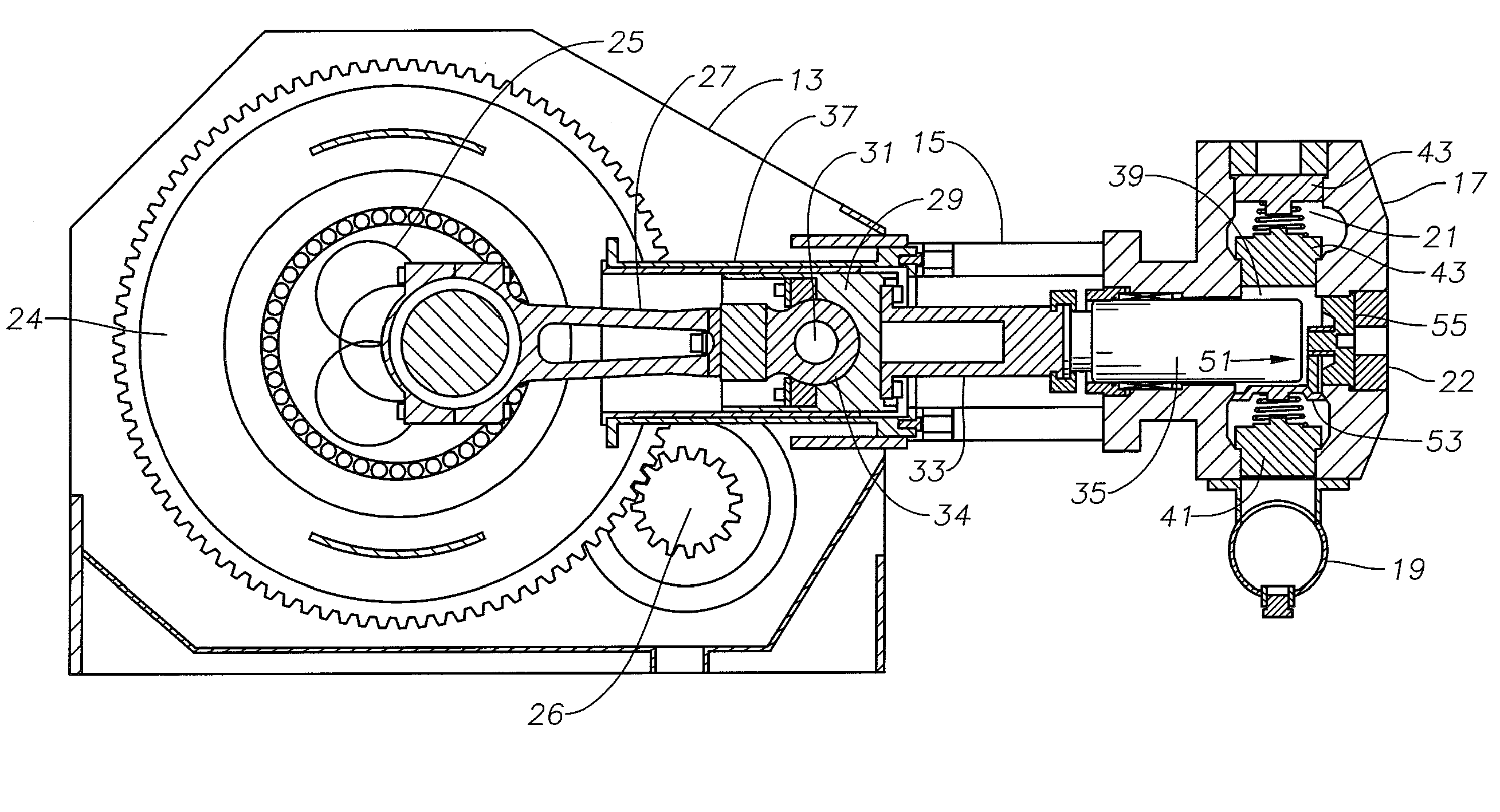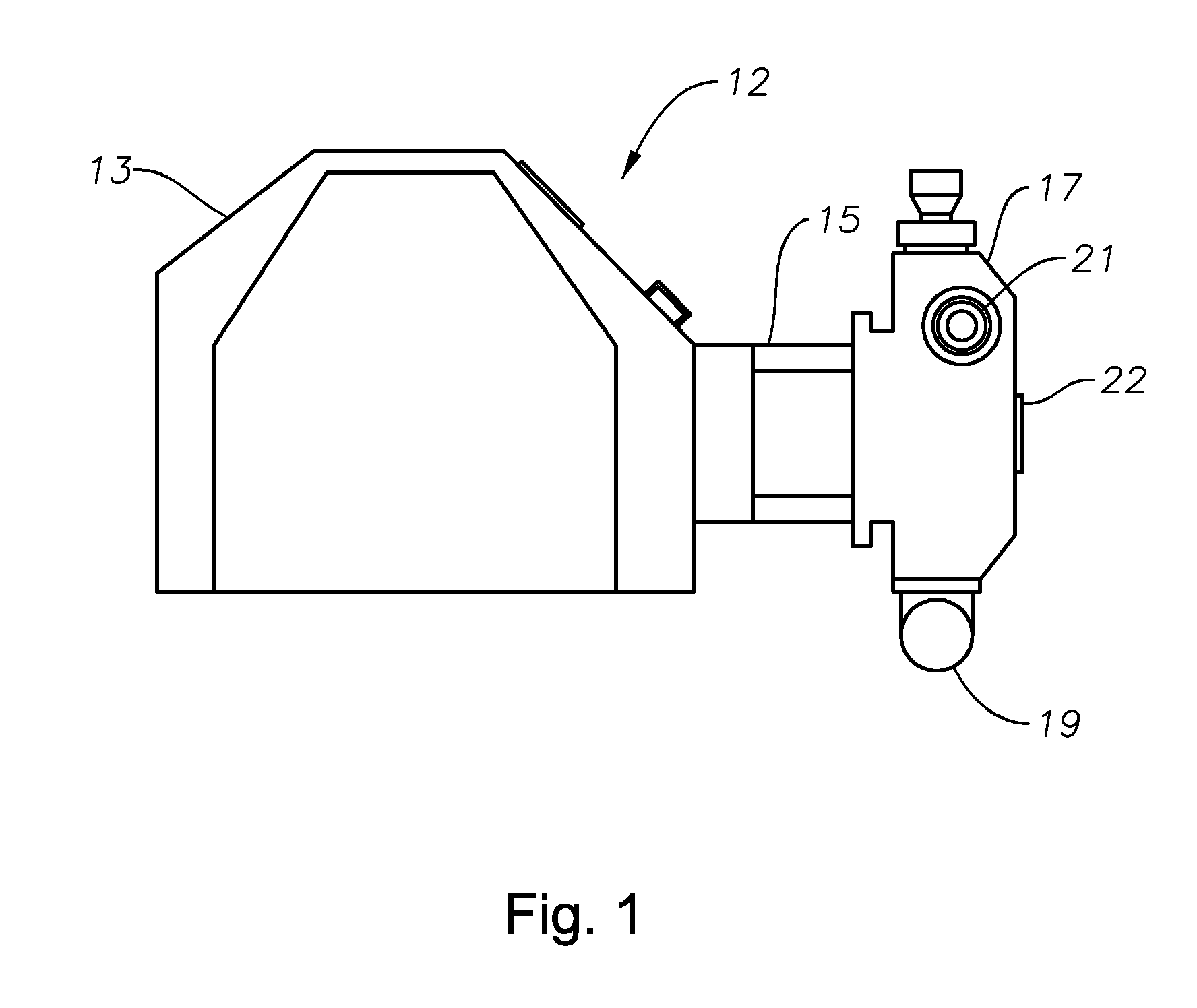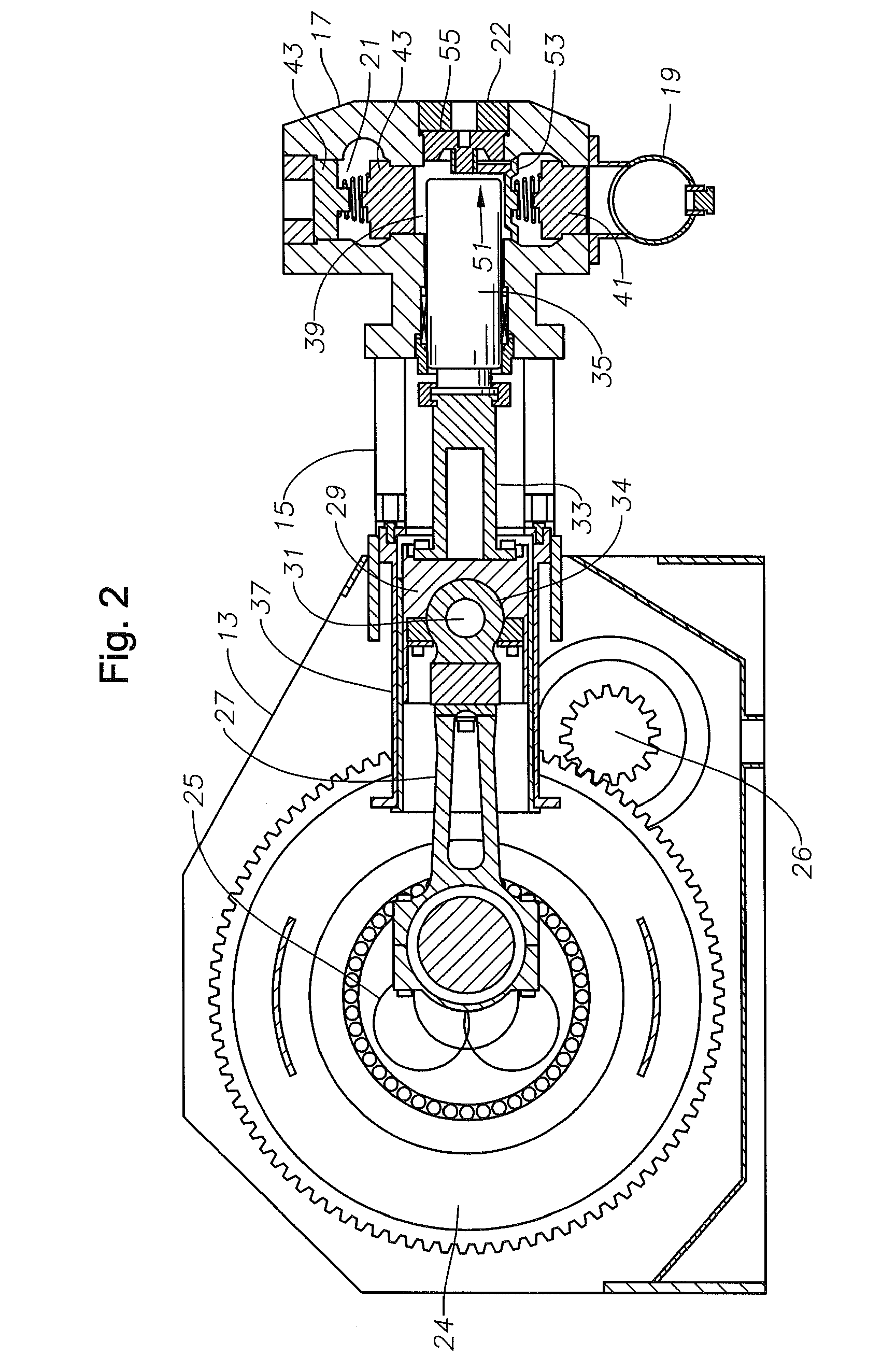Connecting rod without wrist pin
a technology of connecting rods and wrist pins, which is applied in the direction of connecting rod bearings, positive displacement liquid engines, piston pumps, etc., can solve the problems of increasing the overall weight of the reciprocating pump, increasing the cost of transportation, and increasing the weight of the overall pump, so as to lighten the weight of the connecting rod and thereby the weight of the pump assembly
- Summary
- Abstract
- Description
- Claims
- Application Information
AI Technical Summary
Benefits of technology
Problems solved by technology
Method used
Image
Examples
Embodiment Construction
[0014]Referring to FIGS. 1 and 2, reciprocating pump assembly or pump 12 includes a crankshaft housing 13 that comprises a majority of the outer surface of reciprocating pump 12. Stay rods 15 connect crankshaft housing 13 to a set of cylinders 17. Each cylinder 17 is in communication with a fluid inlet 19 and a fluid outlet 21. As shown in FIGS. 1 and 2, a suction cover plate 22 connects to an end of each cylinder 17 opposite the plunger rod housing 15. Pump 12 can be free-standing on the ground, can be mounted to a trailer that can be towed between operational sites, or mounted to a skid such as for offshore operations.
[0015]Referring to FIG. 2, a portion of reciprocating pump 12 housed within crankshaft housing 13 is shown. Crankshaft housing 13 houses a crankshaft 25, which is typically mechanically connected to a motor (not shown). The motor rotates crankshaft 25 in order to drive reciprocating pump 12 (FIG. 1). In one embodiment, crankshaft 25 is cammed so that fluid is pumped ...
PUM
 Login to View More
Login to View More Abstract
Description
Claims
Application Information
 Login to View More
Login to View More - R&D
- Intellectual Property
- Life Sciences
- Materials
- Tech Scout
- Unparalleled Data Quality
- Higher Quality Content
- 60% Fewer Hallucinations
Browse by: Latest US Patents, China's latest patents, Technical Efficacy Thesaurus, Application Domain, Technology Topic, Popular Technical Reports.
© 2025 PatSnap. All rights reserved.Legal|Privacy policy|Modern Slavery Act Transparency Statement|Sitemap|About US| Contact US: help@patsnap.com



